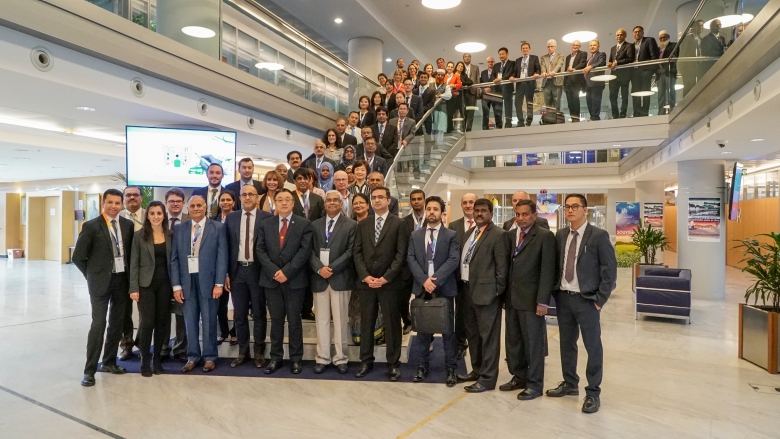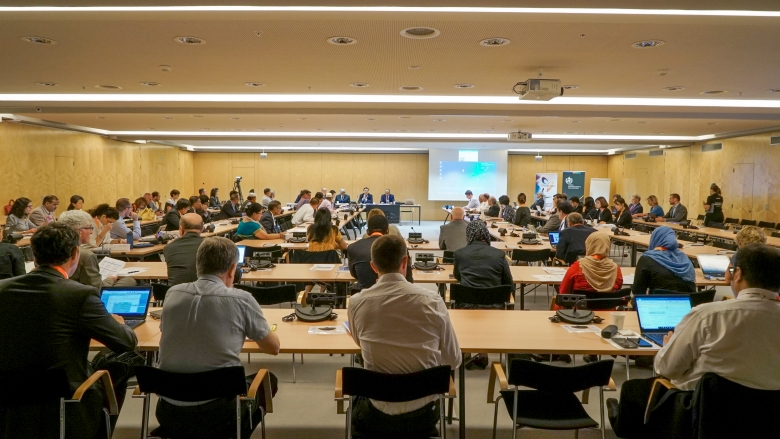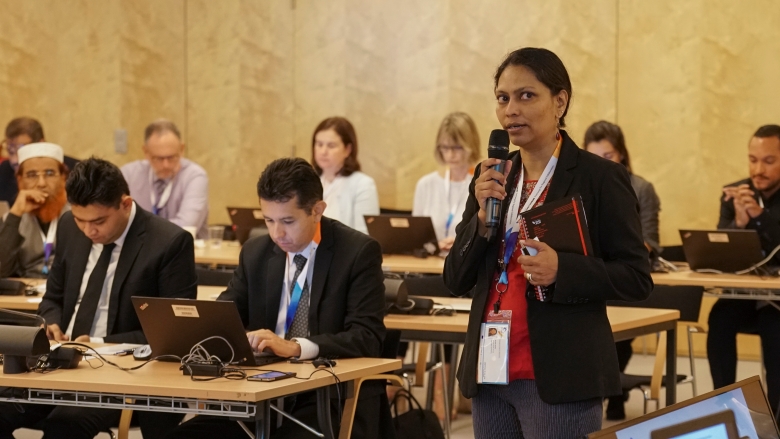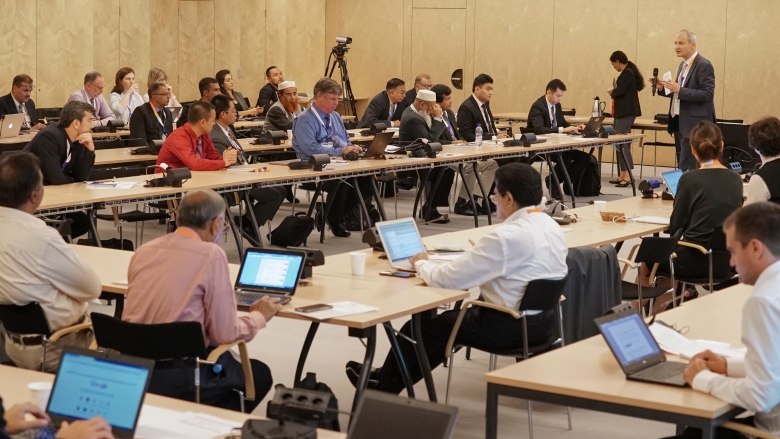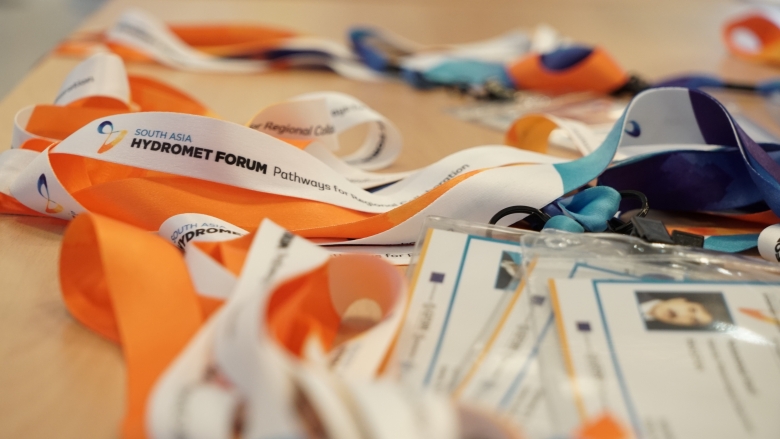South Asia Hydromet Services Forum
September 18-20, 2018
Geneva, Switzerland
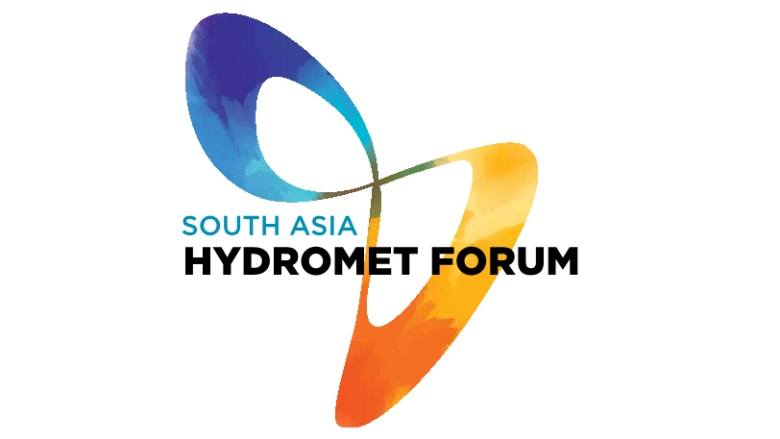
-
South Asia is highly prone to weather and water related disasters such as floods, drought, thunderstorms and cyclones. In the past two decades, over 50% of South Asians - more than 750 million people, have been affected by at least one natural disaster.
The social and economic costs of such hazards have been staggering with almost 230,000 people dead and USD 45 billion in damages between 1970 and 2008. In Bhutan, damages related to the 2009 cyclone Aila were close to USD 17 million. Almost 45 million people were affected by the 2017 floods. Investments in disaster early warning systems can be critical in saving lives and assets and strengthening the resilience of vulnerable communities. International experience suggests that for every dollar invested, the estimated benefits are in the range of two to ten US dollars.
The performance of the region's key economic sectors such as agriculture, aviation, water, urban infrastructure, fisheries, hydropower, and tourism depends upon weather information based services. However, users and communities have limited access to weather information products tailored to these sectors. Development of hydromet services can make a critical contribution in enhancing the performance of these weather dependent sectors and improving livelihoods of local communities.
Efforts to strengthen disaster early warning systems and weather services require national level modernization efforts but also have a regional dimension. Cyclones occurring in the Bay of Bengal affect a number of countries in the region. Between March and May, severe thunderstorms develop that commonly affect northeastern India, Bhutan, Nepal and Bangladesh taking their toll on livelihoods and property causing damages worth millions of dollars across the sub-region. The South Asian monsoon system delivers 70% to 80% of the rainfall to most South Asian countries and variability in timing, duration of precipitation pose serious risks to key sectors such as agriculture. Given the transboundary nature of weather and climate risks, regional collaboration can help improve understanding of these weather patterns and devise strategies to effectively respond to them.Building on efforts made by each country, and support provided by the World Meteorological Organization (WMO), the World Bank has been proactively investing in hydromet modernization efforts in the region. The program takes a bottom up approach with national level operations under implementation in several countries in the region including Nepal, Bhutan, Myanmar and Bangladesh and others such as in Pakistan under preparation. These operations seek to transform the provision of hydro-meteorological services by supporting national hydromet agencies in developing and delivering user oriented information services and disaster early warning systems. Going forward, it is important to consider how to solidify these ongoing investments and support them through regional collaboration.
-
This main objective of the Forum is to bring together high-level representatives from government agencies and development institutions working on weather and climate services to:
- Share information about ongoing national hydromet modernization efforts in the region,
- Identify areas to strengthen regional collaboration, and
- Discuss institutional arrangements needed to sustain and scale up ongoing national and regional efforts in the delivery of hydromet and climate services.
These discussions are important and timely given the transboundary nature of weather and climate risks that affect all countries in the region.
-
Session 2
- WMO’s climate services support and work in the region by Rupa Kumar Kolli, Chief, World Climate Applications and Services Division, World Meteorological Organization (WMO)
- Multi-hazard early warning and climate services, national and regional support by Dr. K.J. Ramesh, Director General, India Meteorological Department (IMD)
- Delivery of sub-regional early warning decision support systems and sub-national climate outlook by Dr. A. Subbiah, Director, Regional Integrated Multi-Hazard Early Warning Systems (RIMES)
Session 3
- Nepal’s experience with hydromet modernization and service delivery by Dr. Rishi Ram Sharma, Director General, Department of Hydrology and Meteorology
- Improving meteorological service delivery through modernization of PMD by Dr. Ghulam Rasul, Director General, Pakistan Meteorological Department (PMD)
- Modernization of BMD and its services by Momenul Islam, Deputy Project Director, Bangladesh Meteorological Department (BMD)
- Bhutan’s vision and progress on its roadmap for hydromet modernization by Karma Dupchu, Director, National Center for Hydrology and Meteorology, Bhutan
- Weather and climate services in Sri Lanka by M.M.P. Mendis, Deputy Director, Sri Lanka Department of Meteorology
- Status and challenges of meteorological services in Maldives by Thahmeena Abdul Kareem, Assistant Meteorologist, Maldives Meteorological Services
Session 4
- Lessons from India and regional initiatives by Dr. V Thiruppugazh, Joint Secretary, National Disaster Management Agency (NDMA), India
- Experience of Pakistan in flood management and early warnings by Muhammad Idrees Masud, Chairman, National Disaster Management Agency (NDMA), Pakistan
- Urban early warning systems in Metro Colombo by D.D. Ariyaratne, Additional Secretary, Ministry of Irrigation and Water Resources Management (MIWRM), Sri Lanka
Session 5
- Joint production of agromet advisories and delivery of agromet services in Nepal by Dr. Archana Shrestha, Senior Divisional Meteorologist, Department of Hydrology and Meteorology and Shibnandan Shah, Project Director, Nepal Agromet Information System (NAMIS), Nepal
- Opportunities and challenges in agromet service delivery by Dr. Mazharul Aziz, Project Director, Department of Agriculture and Extension (DAE), Bangladesh
- Actions and challenges for urban resilience in Karachi by Abdul Fattah Tunio, Member, Planning and Development, Sindh, Pakistan
- Indian ocean observation needs, challenges and future by Dr. Satheesh Shenoi, Director, Indian National Center for Ocean Information Sciences, India
- Regional initiatives on flood forecasting and cryosphere monitoring in the Himalayas by Dr. Mandira Shrestha, Program Coordinator, River Basins and Cryosphere International Center for Integrated Mountain Development (ICIMOD)
- Advances in cryosphere monitoring, innovations and technologies by Rodica Nitu, Global Cryosphere Watch Project Manager, World Meteorological Organization (WMO)
Additional PPT: Asia Regional Resilience to a Changing Climate (ARRCC) Programme and The Met Office Partnership by Julian Menadue, ARRCC MOP Project Executive, United Kingdom Met Office
Organizers
- Co-Hosts: The World Bank Group and the World Meteorological Organization
- With support from: The European Union and the Global Facility for Disaster Reduction and Recovery
- CONTACT: Arati Belle
